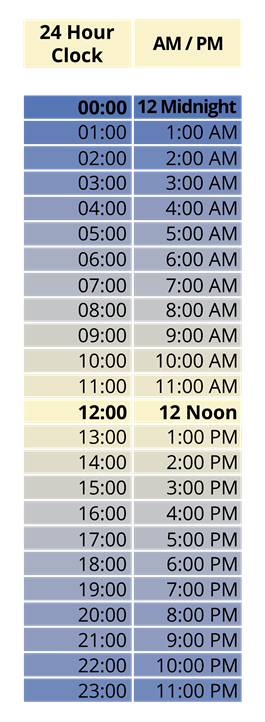UPSKILL MATH PLUS
Learn Mathematics through our AI based learning portal with the support of our Academic Experts!
Learn moreTime is specified in two ways.
1. Ordinary time or 12-Hour format
2. Railway time or 24-Hour format
Ordinary Time or the 12-Hour Format:
- A day has 24 hours. It is divided into two periods; each has 12 hours.
- 12\!:\!00 at night is called midnight, and 12\!:\!00 at day is called noon.
- The 12 hour clock has Ante Meridien (a.m.) and Post Meridien (p.m.).
- Ante Meridien - Midnight 12\!:\!00 to Noon 12\!:\!00
- Post Meridien - Noon 12\!:\!00 to Midnight 12\!:\!00

Example:
1. 9\!:\!00 a.m. means 9'O clock in the morning (before noon).
2. 9\!:\!00 p.m. means 9'O clock in the night (after noon).
Railway time or 24-Hour format:
- 24-hour clock mostly followed in railways, airways and defence.
- It is the clock from 0 hours to 24 hours.
- 24-hour time format usually has 4 digits. First, two digits are hours, and the last two digits are minutes.
- We don't need to mention morning, noon, evening and night in the 24-hour clock.
- 12 at midnight is denoted as 00\!:\!00 hours.
Example:
1. 2\!:\!00 in the after noon = 14\!:\!00 hours
2. 6\!:\!00 in the evening = 18\!:\!00 hours
12-Hour format and 24-Hour format:
